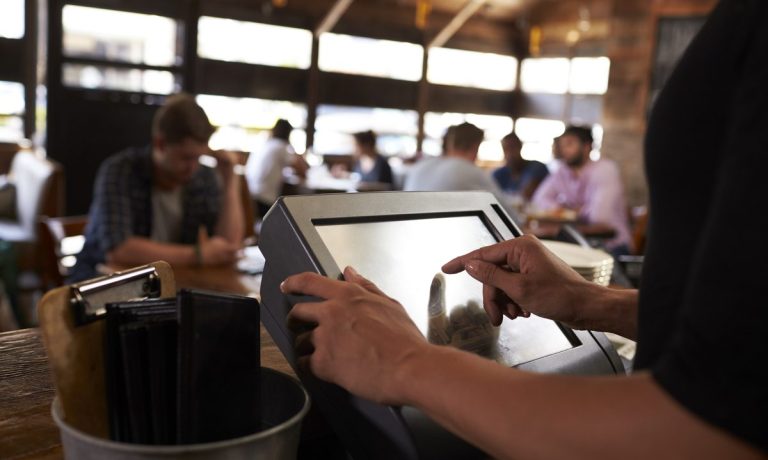
Aiming to get off on the right foot for 2022, major restaurant brands are stepping up their digital efforts.
Diner-style chain Friendly’s, for one, which has 130 restaurants across 12 states, started the year with a run-down of its tech innovations the previous year in a news release issued Tuesday (Jan. 4), with the stated goal of “setting the stage for transformative growth in 2022.” Under its new owners, Amici Partners Group, the brand launched a rewards program and expanded off-premises fulfillment options. In the coming year, the brand will add “menu and experience enhancements.”
Meanwhile, Dickey’s Barbecue Pit, a Dallas, Texas-based fast-casual chain with 550 locations across the United States, announced Thursday (Jan. 6) the launch of its fourth virtual brand since its first, Wing Boss, launched just nine months earlier. The new brand, Trailer Birds Hot Chicken, serves Nashville-style foods and is available through third-party aggregators or through its direct ordering site. These asset-light virtual brands are quickly becoming a central part of Dickey’s business.
At the same time, salad-centric fast-casual chain sweetgreen and leading Mexican-inspired quick-service chain Taco Bell are starting the year off with the announcements of subscription programs aimed at building digital loyalty, with both programs charging $10 for a 30-day membership. The former announced Monday (Jan. 3) a program that, once a day for 30 days, gives customers the opportunity to get a $3 credit for a $9.95+ digital purchase, while the latter offers a daily free taco to subscribers.
See: Taco Bell Rolls Out ‘Taco Lover’s Pass’ Nationwide as Restaurant Subscriptions See Mixed Results
By the Numbers
Digital availability is table stakes for today’s restaurants. According to data from PYMNTS’ 2021 Restaurant Readiness Index, created in collaboration with Paytronix, 55% of chain quick service restaurants’ (QSRs’) sales are generated online, while 39% of chain restaurants with table service’s sales come in through digital channels. Additionally, by last April, 69% of restaurants offered the ability to order using a mobile app, 50% offered the ability to order online, and 52% had loyalty programs.
Read more: QSRs’ Lagging Loyalty-Reward Investment Hurts Innovation and Sales
What Insiders are Saying
Loyalty programs and digital communication will be key to restaurants’ success in the year to come.
“Everything comes down to having a strong digital guest experience, so you can collect data and start communicating with guests,” Paytronix CEO Andrew Robbins told PYMNTS’ Karen Webster in an interview. “And the guests like being rewarded for where they spend their money.”
Related: To Survive and Grow in 2021, Restaurants Put Tech Innovation and Culture on the Menu
Yet even a strong mobile presence may not be enough to hack it down the line in this rapidly digitizing space.
“With the omniverse and other things coming down the pipe, there are going to be different digital interaction models,” Fiserv Vice President of Global Digital Commerce Scott Mackay told PYMNTS in an interview. “I don’t think digital is going away, but what digital means from a consumer interaction is going to change.”
See also: Restaurants, Grocers Embrace Voice, Contextual Commerce to Thrive in an Omnichannel World